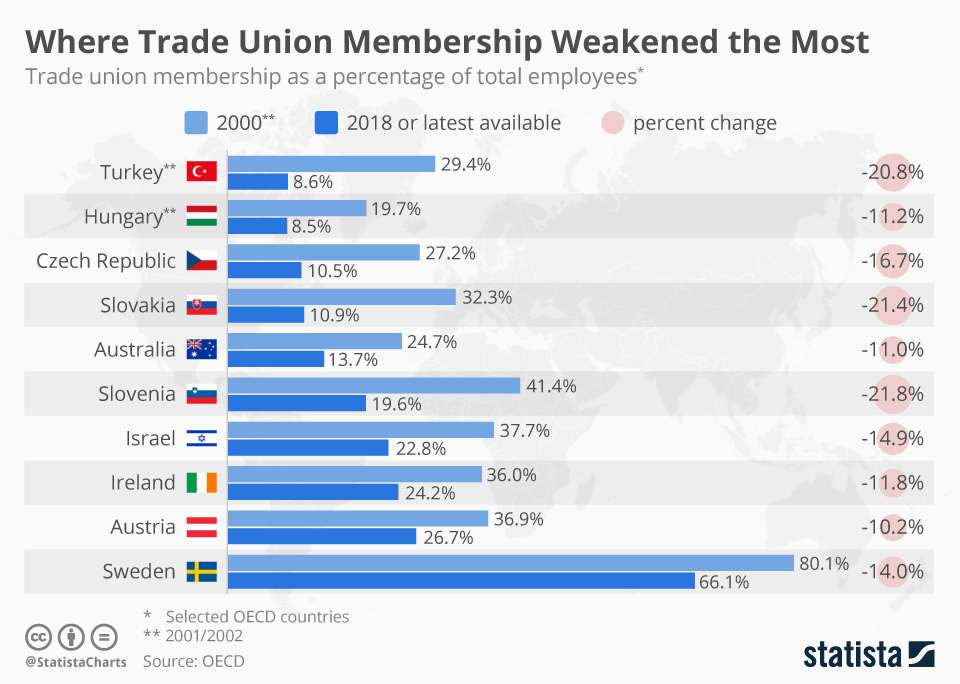Where Trade Union Membership Weakened the Most
Unions
Slovenia experienced the highest percentage loss (21.8 percent). In the former Yugoslav republic, the decline of the manufacturing sector, which had the most unionized workers, contributed to the downward trend for unions, as did a more competitive global market that Slovenia entered by becoming a member of the EU in 2004. Loss for unions are also significant in other Eastern-block-turned-EU-member countries, like Hungary, Czech Republic and Slovakia.
In Australia, compulsory unionism was abolished in 1996, which in turn led to losses for unions, and the decline of manufacturing did the rest. The rapid fall of the Australian unions that exceeds that of any other rich, developed country, has been connected to the country’s stagnant wages, according to Reuters.
Out of all OECD countries, only Iceland, which is also the country with the highest percentage of unionized workers overall (90.4 percent), was able to extend the share of union workers, if only by one percent.

Description
This chart shows the countries with the biggest losses in trade union membership (as a percentage of all employees) from 2000-2018.





















